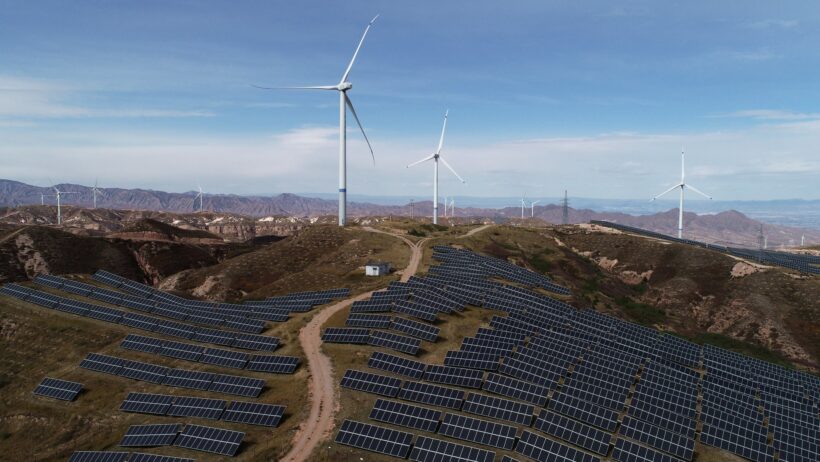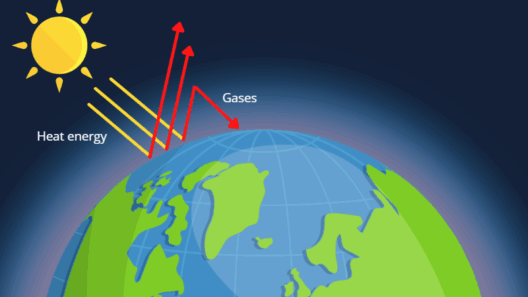The battle against climate change resembles a grand chess match, where every move is critical and the stakes could not be higher. In this intricate game, clean energy emerges as a formidable knight, navigating the board with agility and purpose, poised to deliver a checkmate against fossil fuel dependence. The renewable revolution has begun, leading us toward a sustainable future, yet challenges persist that threaten to stymie its pace. This narrative explores how the ascendancy of clean energy fuels our struggle against global warming, underscoring both the urgency and potential of this transformative movement.
At the heart of the renewable revolution lies a symphony of energy sources: solar, wind, hydroelectric, and geothermal systems harmonizing together to create a sustainable framework for the future. Solar power, akin to a generous sunbeam, harnesses the limitless energy bestowed upon us by our closest star. This effulgent source, once considered a novelty, has now burgeoned into an essential component of our energy landscape. Photovoltaic cells, which capture sunlight and convert it into electricity, have witnessed exponential growth. They are akin to verdant vines that take root, sprawling across rooftops and deserts alike, proliferating as costs plummet and technology advances.
Wind energy, meanwhile, swirls with the force of a tempest, propelling turbines that dance upon the horizon. Each rotation of the blades represents a harbinger of hope, converting kinetic energy into electricity. Wind farms stand as beacons of progress on vast plains and offshore expanses, symbolizing a commitment to harnessing the natural forces around us. Their presence sparks a vision of a future unshackled from the fetters of carbon emissions. Yet, despite this vigor, it is imperative to remember that the winds of change cannot blow swiftly enough; we must accelerate our adoption of these technologies.
Hydroelectric power, meanwhile, flows through our rivers and dams like a lifeblood, presenting both an opportunity and a conundrum. While it contributes significantly to our electricity supply, the ecological consequences of damming rivers must be weighed carefully. This delicate balance mirrors that of a tightrope walker, each step necessitating caution to avoid unsettling the natural world. The urgency of addressing climate change calls for a delicate and judicious application of hydroelectric resources, ensuring they enrich rather than deplete our ecosystems.
Geothermal energy presents yet another dimension of the renewable landscape, tapping into the Earth’s subterranean warmth. This energy source is like an ember glowing beneath the surface, a potential that can be exploited for heating and electricity generation. As we delve more into harnessing this inexhaustible resource, it becomes imperative to extract it sustainably, thus safeguarding the thermal equilibrium of our planet.
As we embark on this renewable journey, the specter of fossil fuels casts a long shadow. The remnants of a carbon-heavy economy cling persistently to our collective consciousness, presenting formidable barriers to a cleaner, greener future. Transitioning away from coal, oil, and natural gas is like shedding a heavy cloak; it liberates, yet the lingering weight can impede progress. The realities of vested interests and dependencies on these sources demand that we navigate this transformation with skill and tenacity.
Education plays an indispensable role in this transition. Awareness about the environmental ramifications of fossil fuels and the tangible benefits of renewable energy sources can transform public sentiment. When individuals recognize that their choices, whether they pertain to transportation, housing, or consumption, directly influence the vitality of our planet, that awareness breeds empowerment. Energy conservation becomes not only a personal responsibility but a collective endeavor, reinforcing the urgency of the cause.
Policy and governance wield significant influence over the pace of this transformation, serving as the architects of a sustainable future. Governments must enact ambitious legislation that prioritizes renewable incentives while phasing out fossil fuel subsidies. This strategic pivot is essential for creating an equitable energy transition, ensuring that communities once reliant on fossil fuel industries are not left behind. Policies can serve as scaffolding, supporting the burgeoning industries that will define our energy future.
Investments in renewable energy research and development are crucial cornerstones of this revolution. As our understanding of energy systems deepens, innovative technologies are emerging that promise greater efficiency and sustainability. This spirit of innovation could be likened to a wellspring, nourishing the roots of our energy infrastructure and feeding into endeavors that drive down costs for consumers while amplifying supply. The role of private enterprises and initiatives is equally pivotal; they can act as catalysts, pushing boundaries and exploring uncharted territories in the energy sector.
Global collaboration is paramount in addressing the multifaceted challenges of climate change. Countries, regardless of size or economic status, must forge alliances, sharing knowledge and resources to build resilient renewable energy systems. The scale of this cooperation is instrumental; it intertwines our fates and mutual goals to mitigate the climate crisis. Together, we can craft a mosaic of solutions that not only mitigates global warming but also promotes energy independence and social equity.
Yet, as we traverse this complex landscape, we must confront the uncomfortable reality that the renewable revolution is still in its infancy. Progress has been made, but it is insufficient to avert the impending crisis. The transition demands the fervor of a movement, magnitudes greater than what currently exists. The collective voice of activists, scientists, policymakers, and citizens must crescendo into a clarion call, demanding action and accountability.
The renewable revolution embodies a vital ethos: the realization that clean energy is not merely an alternative but a necessity. Embracing renewables is akin to planting seeds of hope for future generations, ensuring that the tomorrow we envision is not marred by the consequences of today’s negligence. The path forward is fraught with challenges, yet every step taken toward adopting clean energy brings us closer to safeguarding our planet’s health and, ultimately, humanity’s survival. In this chess match against climate change, clean energy is our knight, steadfast and tenacious, ready to lead us to victory.







